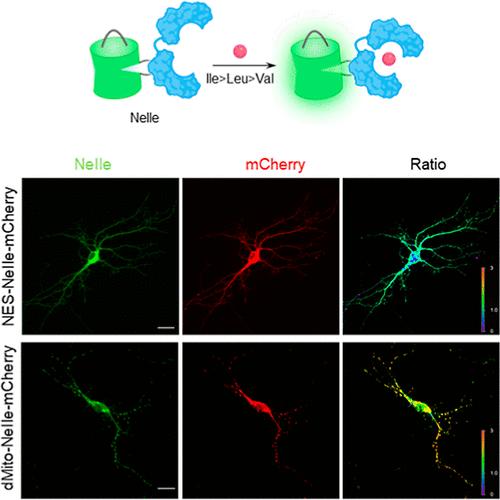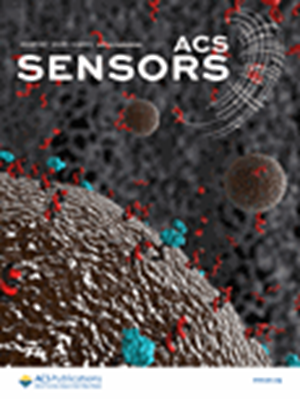NeIle, a Genetically Encoded Indicator for Branched-Chain Amino Acids Based on mNeonGreen Fluorescent Protein and LIVBP Protein
IF 8.2
1区 化学
Q1 CHEMISTRY, ANALYTICAL
引用次数: 0
Abstract
Branched-chain amino acids (BCAAs) play an important role in the functioning of mammalian cells and the central nervous system. However, available genetically encoded indicators for BCAAs are based on Förster resonance energy transfer and have a limited dynamic range. We developed a single fluorescent protein-based sensor for BCAAs, called NeIle, which is composed of circularly permutated mNeonGreen protein inserted into the leucine-isoleucine-valine binding protein (LIVBP) from Escherichia coli bacteria. In solution, the NeIle indicator displayed a positive fluorescence response to adding isoleucine, leucine, and valin amino acids with high ΔF/F dynamic ranges of 27-, 19-, and 11-fold and the corresponding affinity values of 5.0, 2.9, and 75 mM, respectively. The spectral and biochemical properties of the NeIle indicator were characterized in solution. We characterized the brightness of the NeIle indicator in living mammalian cells, including cultured neurons. Using the NeIle indicator, we successfully visualized the dynamics of isoleucine transients in different organelles of mammalian cells. We obtained and analyzed the X-ray crystal structure of the NeIle indicator in an isoleucine-bound state. Structure-guided directed mutagenesis of the NeIle indicator revealed the basis of its fluorescence response and selectivity to isoleucine.

基于 mNeonGreen 荧光蛋白和 LIVBP 蛋白的支链氨基酸基因编码指示剂 NeIle
支链氨基酸(BCAAs)在哺乳动物细胞和中枢神经系统的功能中发挥着重要作用。然而,现有的支链氨基酸基因编码指示剂都是基于福斯特共振能量转移,动态范围有限。我们开发了一种基于单一荧光蛋白的 BCAAs 传感器,称为 NeIle,它由插入大肠杆菌亮氨酸-异亮氨酸-缬氨酸结合蛋白(LIVBP)的环状包覆 mNeonGreen 蛋白组成。在溶液中,加入异亮氨酸、亮氨酸和缬氨酸后,NeIle指示剂显示出正荧光响应,ΔF/F动态范围分别为27倍、19倍和11倍,相应的亲和值分别为5.0、2.9和75毫摩尔。我们对 NeIle 指示剂在溶液中的光谱和生化特性进行了表征。我们对 NeIle 指示剂在哺乳动物活细胞(包括培养的神经元)中的亮度进行了表征。利用 NeIle 指示剂,我们成功地观察到了哺乳动物细胞不同细胞器中异亮氨酸瞬态的动态变化。我们获得并分析了异亮氨酸结合态 NeIle 指示剂的 X 射线晶体结构。对 NeIle 指示剂的结构引导定向诱变揭示了它对异亮氨酸的荧光反应和选择性的基础。
本文章由计算机程序翻译,如有差异,请以英文原文为准。
求助全文
约1分钟内获得全文
求助全文
来源期刊

ACS Sensors
Chemical Engineering-Bioengineering
CiteScore
14.50
自引率
3.40%
发文量
372
期刊介绍:
ACS Sensors is a peer-reviewed research journal that focuses on the dissemination of new and original knowledge in the field of sensor science, particularly those that selectively sense chemical or biological species or processes. The journal covers a broad range of topics, including but not limited to biosensors, chemical sensors, gas sensors, intracellular sensors, single molecule sensors, cell chips, and microfluidic devices. It aims to publish articles that address conceptual advances in sensing technology applicable to various types of analytes or application papers that report on the use of existing sensing concepts in new ways or for new analytes.
 求助内容:
求助内容: 应助结果提醒方式:
应助结果提醒方式:


